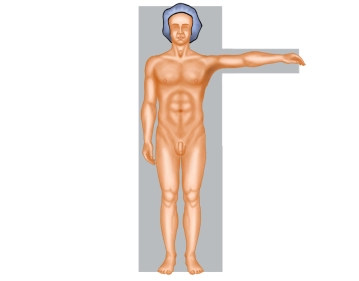- Carcinomas of the cecum and ascending colon
- Neuroendocrine tumor (NET) of the appendix, if an appendectomy is not oncologically sufficient.
With the aim of standardizing and optimizing the surgical treatment of colon cancer, a treatment principle was described in 2009 under the term complete mesocolic excision (CME), which is intended to meet the oncological requirements of surgical cancer treatment in all sections of the colon.
This concept is based on the strict preservation of the integrity of the mesocolic fascia on both sides by dissection in the embryonically predetermined slit-shaped space between the visceral and parietal fascia. By preserving both fascial layers, the mesocolon remains intact, avoiding tumor cell dissemination analogous to an intact mesorectum in TME.
Through central vascular ligation at the vessel origin ("high tie"), in right hemicolectomy from the superior mesenteric artery, the complete excision of the regional lymphatic drainage area is achieved. This technique aims to achieve maximum lymph node yield and thereby avoid the main cause of local recurrences.
In conventional resection, the arterial trunk vessels supplying the tumor are not necessarily ligated centrally ("low tie"), which means that complete dissection of the main lymph nodes is not ensured.
The current S3 guideline requires a lymph node yield of at least 12 lymph nodes, noting that the number of lymph nodes present in the area of the right hemicolon is highly variable between individuals and also age-dependent.
Both the higher number of resected lymph nodes and the CME itself likely contribute to improved survival rates according to current evidence.
Lymphatic drainage of the colon
The regional lymphatic drainage area of the colon consists of four lymph node groups. Epi- and paracolic lymph nodes are grouped with the pericolic lymph nodes, with the epicolic lymph nodes running directly along the intestinal wall and the paracolic lymph nodes along the marginal arteries. The intermediate lymph nodes are located along the respective arterial trunk vessels. The main lymph nodes surround the trunk vessels near their origin from the superior mesenteric artery or inferior mesenteric artery in the left colon.
Since the lymphogenic metastasis of colorectal carcinoma follows fixed rules, the supplying arteries with the potentially affected lymph nodes determine the extent of resection and not the primary tumor.
An adequate safety margin ultimately results from the respective arterial supply of the tumor-affected section, with numerous vascular variants. All arteries running centrally within a distance of 10 cm on both sides of the tumor, as well as the colon affected by this arterial supply, are resected. This also applies to the terminal ileum.


